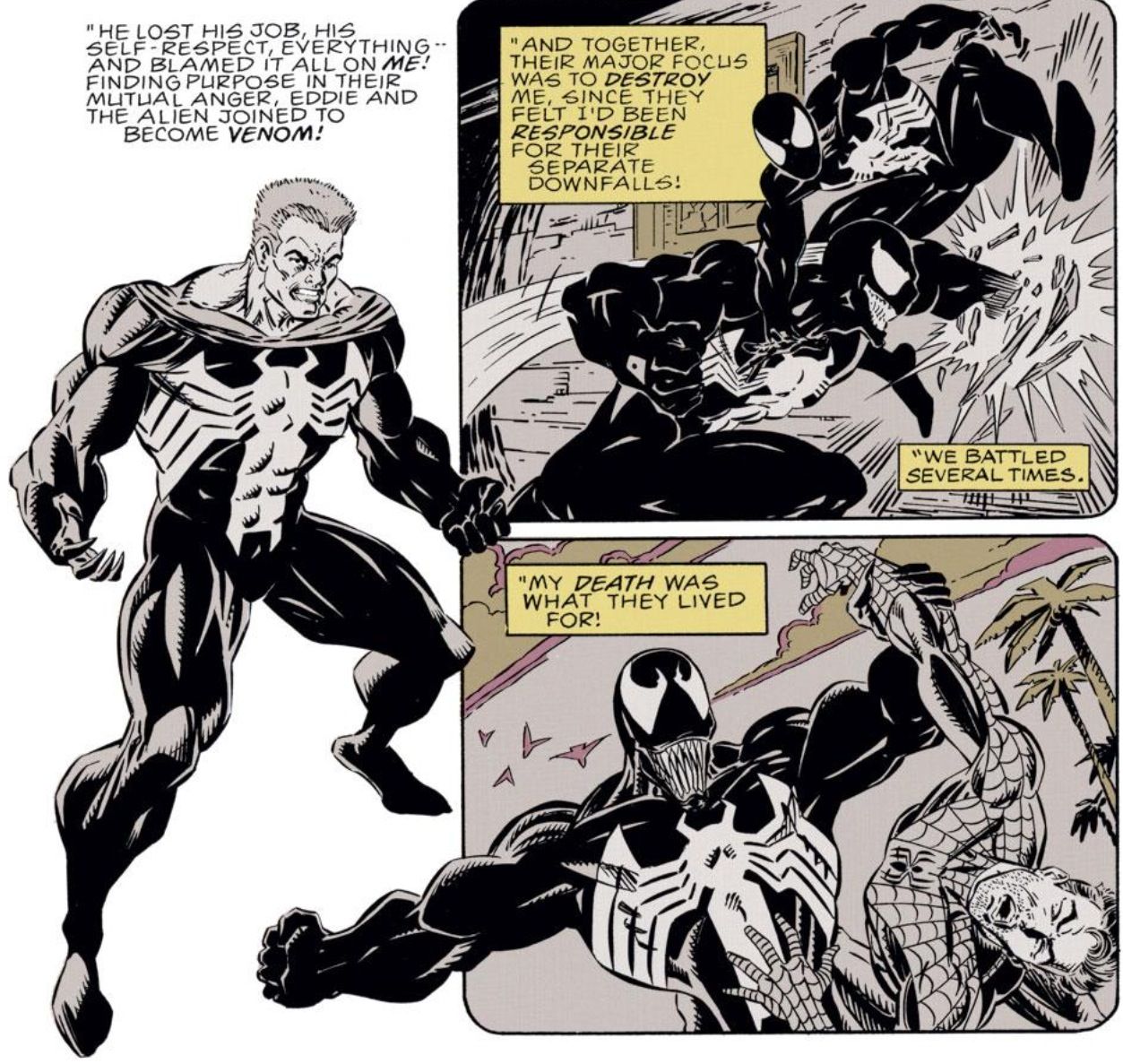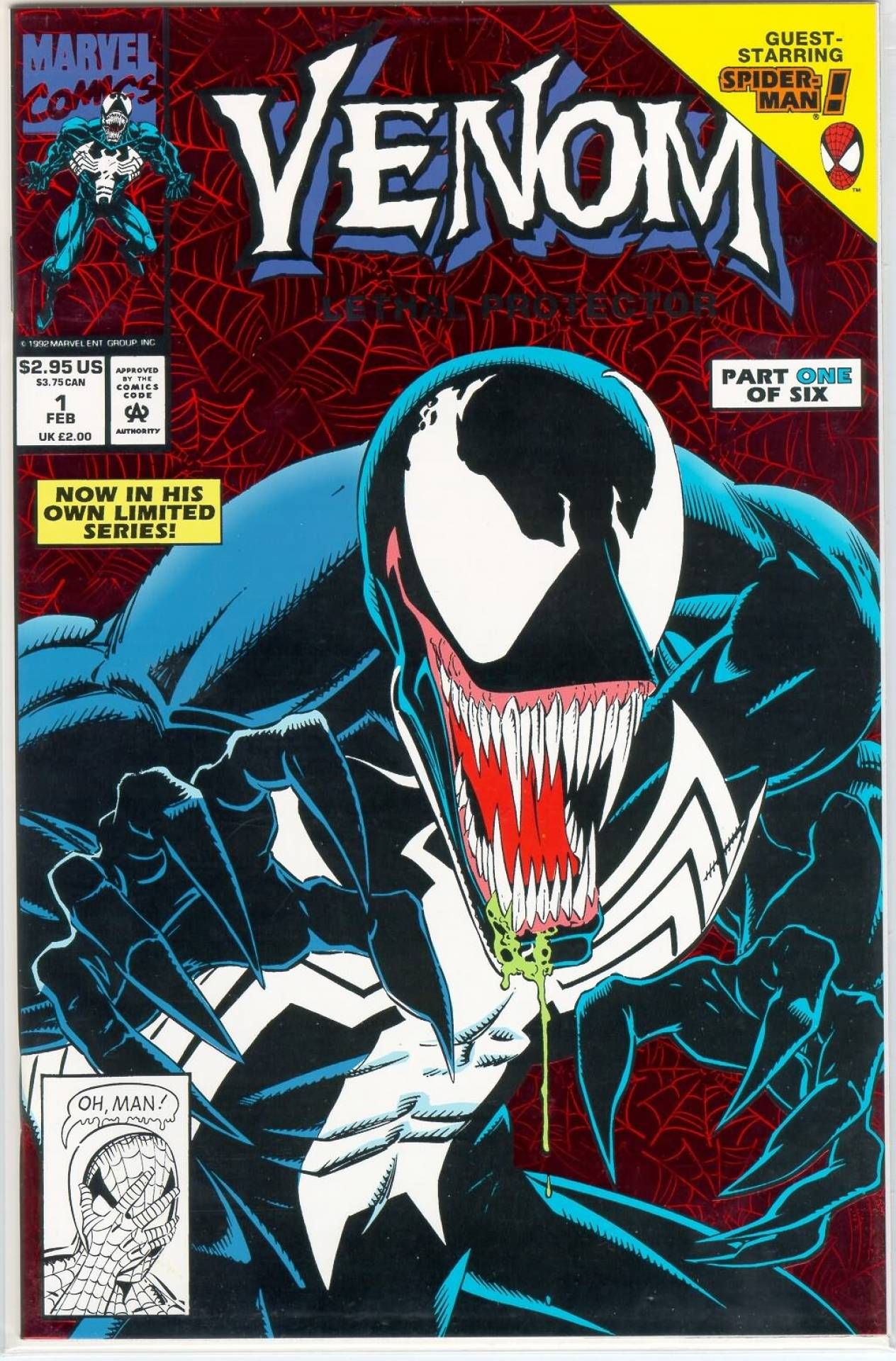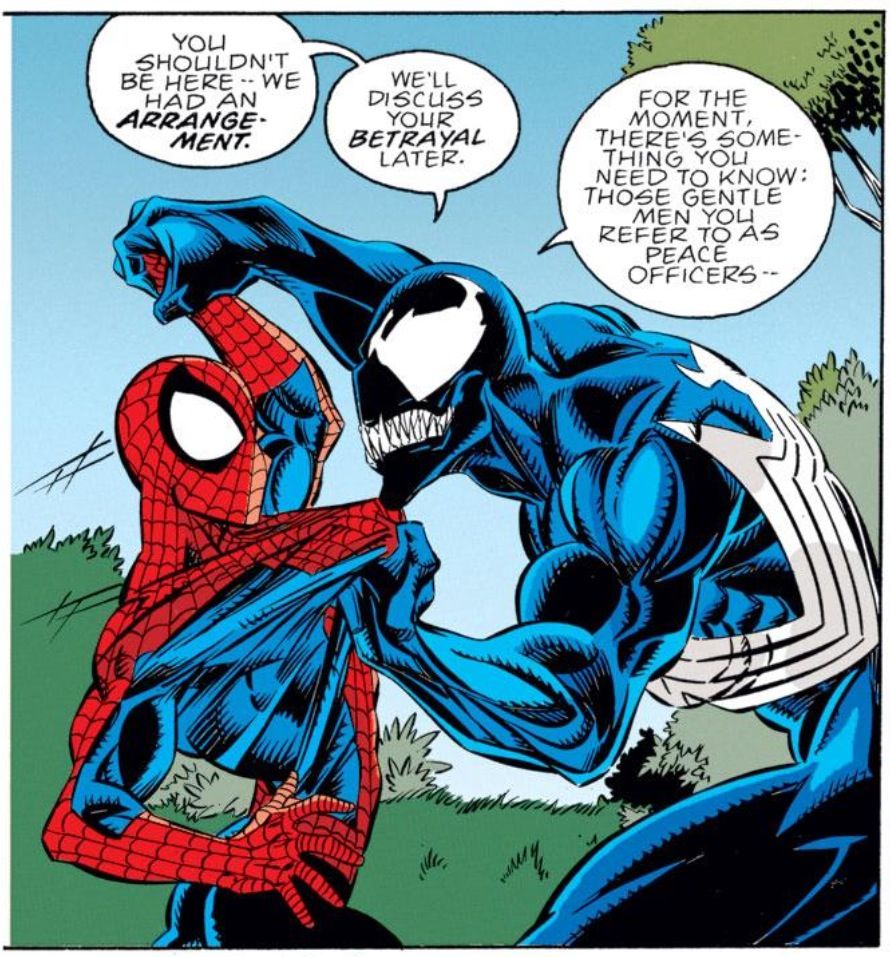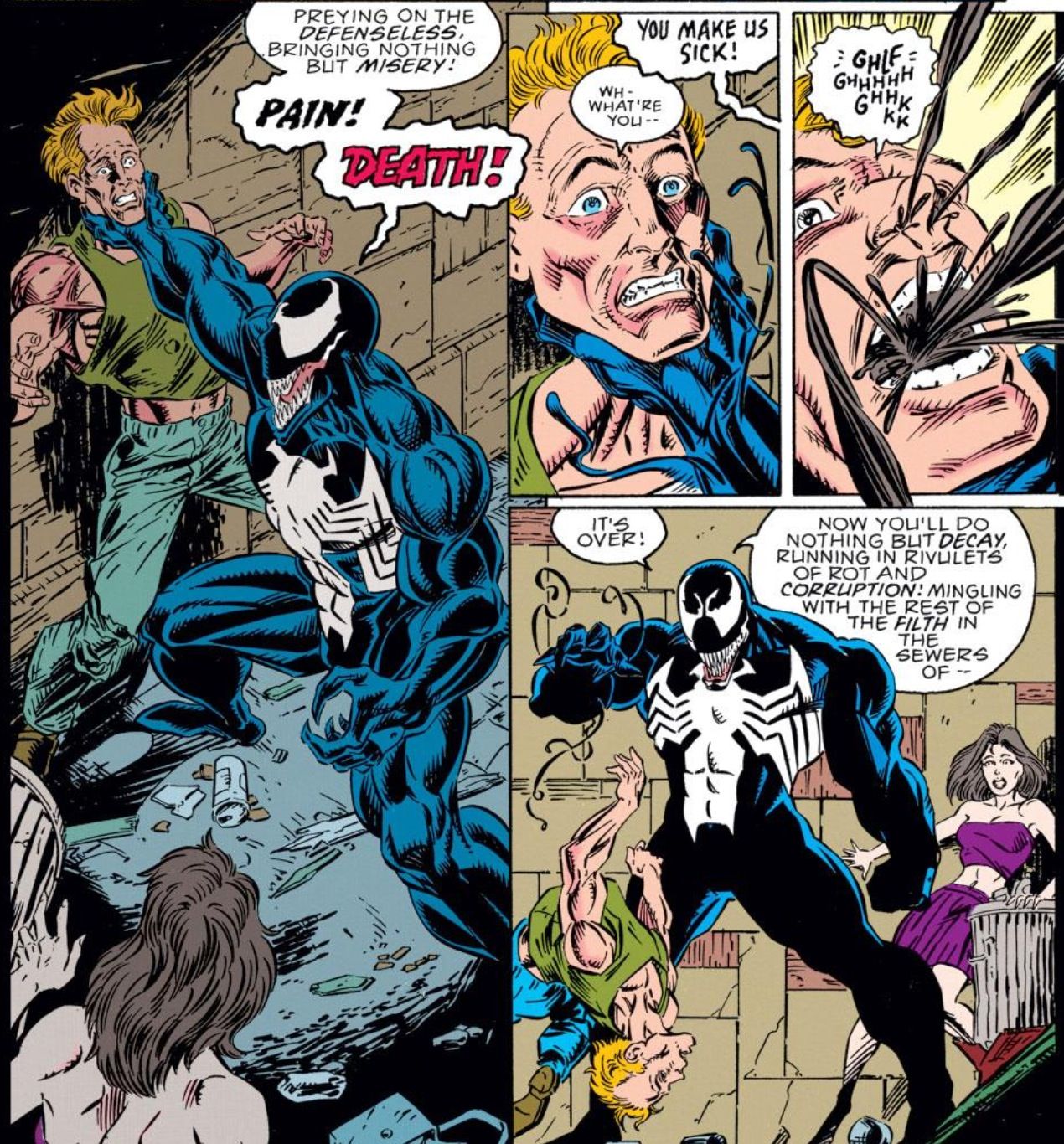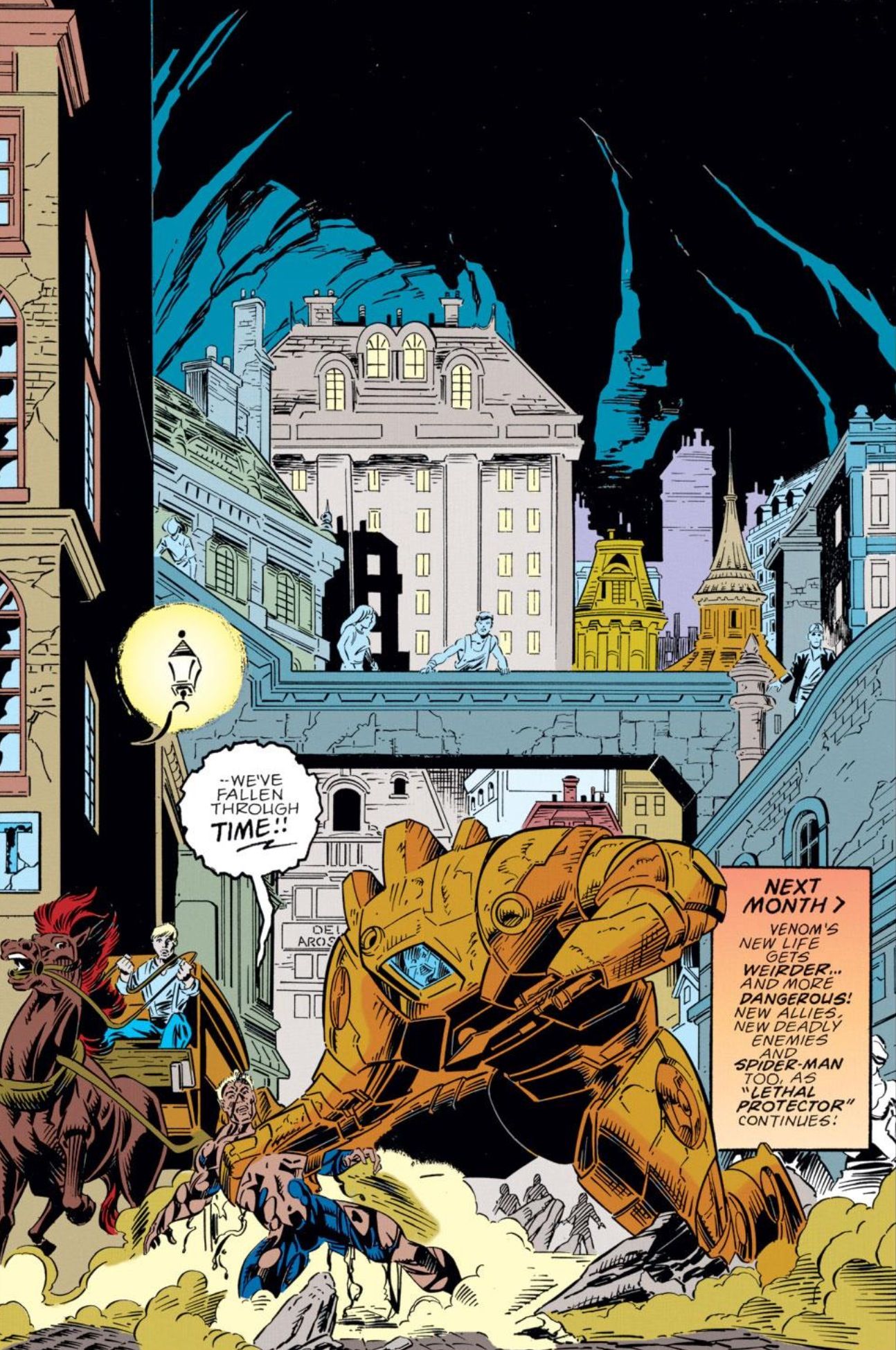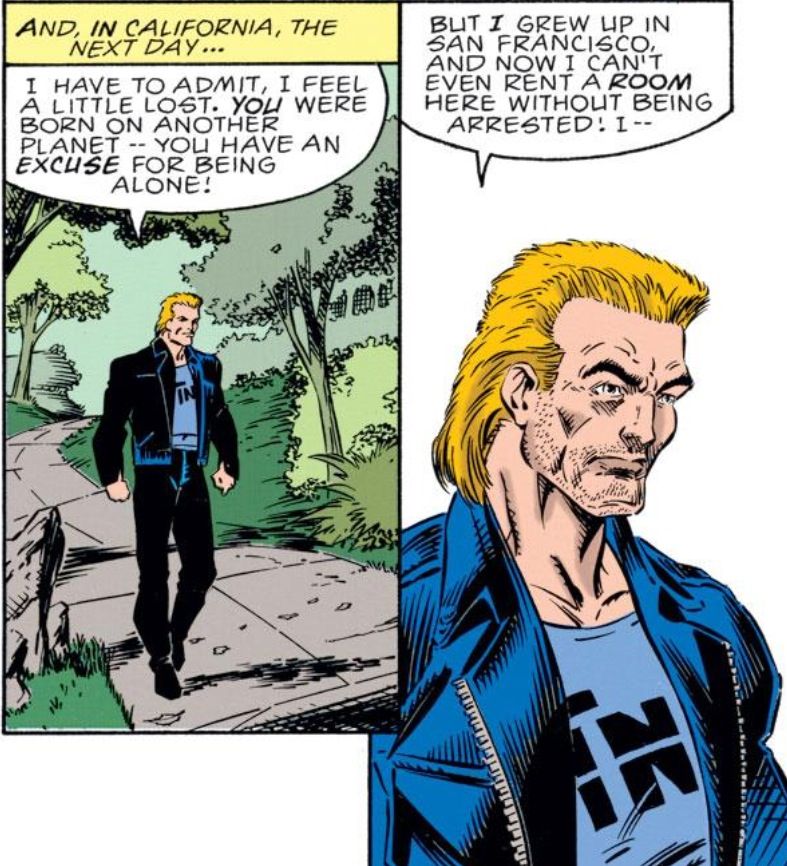In this column, Mark Ginocchio (from Chasing Amazing) takes a look at the gimmick covers from the 1990s and gives his take on whether the comic in question was just a gimmick or whether the comic within the gimmick cover was good. Hence "Gimmick or Good?" Here is an archive of all the comics featured so far. We continue with the foil covered Venom: Lethal Protector #1...
Venom Lethal Protector #1 (published February 1993) – script by David Michelinie, pencils by Mark Bagley, inks by Sam de la Rosa and Al Milgrom
With Marvel ending its Flash Thompson Venom series after 42 issues just this past comic book week, I thought it was worth looking back at the evil symbiote’s inaugural solo appearance – back in the days when Eddie Brock was bonded to the alien and Venom was best left alone in a short, six-issue mini-series – the red foil covered Venom Lethal Protector #1. For those who keep track of these things, in addition to the red cover, there is a much rarer gold foil retailer incentive and a black misprint variant version of this comic.
But what about inside the comic?
The publication of the Venom Lethal Protector mini-series marked a confluence of Venom’s peak-level popularity which had been exponentially building dating back to his first ever appearance in Amazing Spider-Man #300, and Marvel’s desire to capitalize on all things Spider-Man during the comic book industry’s boom period. Spider-Man group editor Danny Fingeroth was a busy man in 1993, already overseeing Amazing, Spectacular, Web of and “adjective-less” Spider-Man (with Spider-Man Unlimited on the way).
Still, even with the market’s oversaturation of Spider-Man comics, for the first issue of Venom Lethal Protector, Fingeroth was able to secure the Webhead’s “A” creative team of David Michelinie and Mark Bagley, who were both also working on Amazing. Ron Lim would come on to do pencils for issues #4-6 of the mini, but Michelinie maintained scripting duties throughout.
The mini also marks Venom’s “official” transition from moral-ambiguous villain to Wolverine/Punisher-esque anti-hero. Michelinie and Bagley set the story in San Francisco but, even with the change of scenery from Manhattan, the creative team can’t help but insert Spider-Man into the mini’s very first issue. I’ve never read anywhere definitively that this was due to Marvel’s lack of trust in Venom as the undisputed “star” of his own series, but it’s a curiosity all the same to see Spidey show up so soon in Brock’s first comic.
Beyond just my general disappointment in seeing Spider-Man as quickly as we did, his appearance also grinds the story to a halt. Michelinie’s script gets very exposition-heavy, as he recaps the origins of the alien symbiote, and how his rejected black costume bonded with disgraced news reporter Eddie Brock, who also harbored a hatred for Spider-Man because he blamed the Web Slinger for exposing his article about the identity of the Sin Eater as a hoax.
At the time this comic was published, it was more than five years since Venom’s origin was explained in Amazing Spider-Man #300. He would go on to appear in a number of issues of Amazing Spider-Man and was arguably Spidey’s most popular villain from that era. Why Michelinie and Bagley felt it was necessary to recap the character’s background is beyond me. I apologize if this is an arrogant assumption on my part, but I have to think anyone who bought a Venom-centric mini-series (like I did in the 90s) was a big enough fan of the character that they probably didn’t need the origin filler.
Meanwhile, as someone who is an unashamed fanboy of late-80s/early-90s Venom, I believe changing Brock from villain to anti-hero was a poor decision because it sucked so much of the fun away from the character. Going back to his very first appearance, Venom had a twisted moral code wherein he justified his urges to murder Spider-Man by claiming his bloodlust was in the interest of protecting “innocents” from Spidey’s “evil.” We get a glimpse of that level of warped justice in the comic’s very first scene when Venom murders a mugger, but that’s about it. Some might argue that Marvel was just trying to evolve the character, but I think they instead neutered Venom as an “anything can happen” harbinger of anarchy, which previously made him a special attraction in the comic book universe.
Also, as the issue progresses, the story and action become painfully generic, and I honestly could be reading a comic about pretty much anyone. This is especially true near the end when Venom is fighting a pair of giant robots called Lord Diggers. The fight ends with Venom and one of the robots falling through the floor and finding themselves in a bit of a time warp to the past.
Robots and time travel? In a comic about Venom? It feels way too incongruous for me. As the mini marches on, Michelinie eventually introduces a host of new symbiotes to serve as adversaries. While that creative decision ushered in the era of symbiote overkill, that at least reads like an appropriate development in a Venom-centric comic. But, the way this first issue ends does not make a compelling case for me to shell out another three dollars in a couple of weeks – especially since I was already dropping money on four or five other Spider-books at the time.
It’s probably just the nostalgia talking, but I’ve always enjoyed Bagley’s version of Venom. The fangs and the claws always made the character feel imposing and monstrous while also capturing the anarchistic fun of Todd McFarlane’s original character design. But, Bagley’s Brock is a totally different story. The best way to describe his hairdo is “business in the front, party in the back.” What an odd choice for a character that always rocked the big bully buzz-cut.
Given everything we know about the “House of Ideas” now, it’s not that surprising that, when the Spider-Man universe was at the peak of its early 90s popularity, the creative output was severely lacking. There were a couple of creators who were still able to pull out some excellent stories during this era (J.M. DeMatteis, some Tom DeFalco) but, by 1993, Michelinie’s scripts had become increasingly bland as he neared the end of his run. Bagley had his moments of greatness, but wouldn’t develop more consistency until he started working on Ultimate Spider-Man less than a decade later.
Verdict: Gimmick

